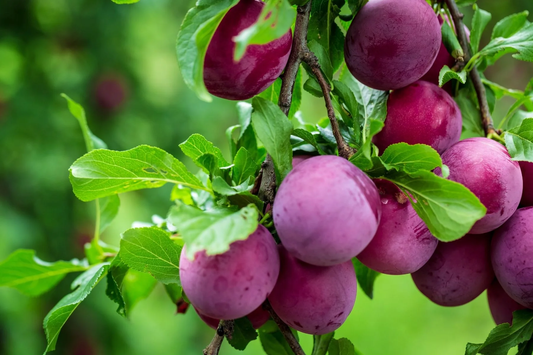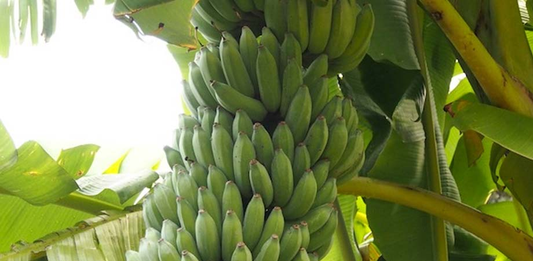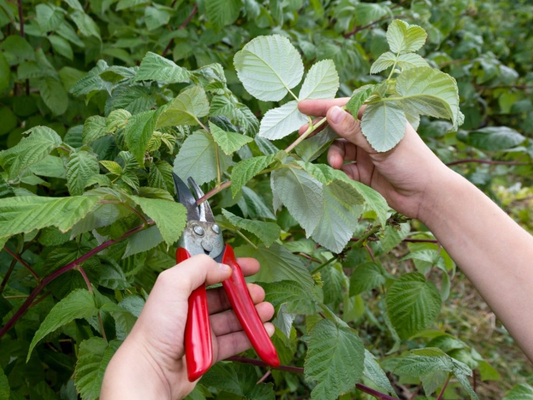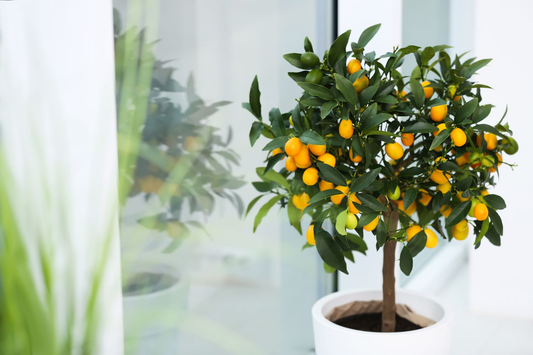How to Grow Indoor Vegetables in Winter and Beat the Cold
Share
- 1. Introduction: Why Grow Indoor Vegetables in Winter?
- 2. Choosing the Right Vegetables for Indoor Winter Gardening
- 3. Essential Indoor Gardening Tools for Winter Success
- 4. Setting Up Your Indoor Garden for Winter
- 5. Creating the Ideal Growing Conditions for Indoor Vegetables
- 6. Watering and Fertilizing Indoor Vegetables in Winter
- 7. Managing Pests and Diseases in Indoor Winter Gardens
- 8. Maximizing Space for Indoor Vegetable Gardening
- 9. How to Harvest Indoor Vegetables During Winter
- 10. Common Challenges of Growing Indoor Vegetables in Winter and How to Overcome Them
- 11. FAQ - Frequently Asked Questions
1. Introduction: Why Grow Indoor Vegetables in Winter?
Growing vegetables indoors during the winter season offers numerous benefits that can make a significant impact on your health, sustainability efforts, and overall enjoyment. While the cold weather outside may prevent outdoor gardening, indoor vegetable gardening provides a solution that allows you to continue producing fresh, healthy food year-round. Here are some key reasons why you should consider growing vegetables indoors this winter:
- Continuous Fresh Produce: Growing vegetables indoors ensures a steady supply of fresh, nutritious food even when the winter cold limits your options in the garden.
- Cost Savings: By growing your own vegetables indoors, you can reduce grocery bills during the winter months when fresh produce prices tend to rise.
- Environmental Benefits: Indoor gardening helps reduce the carbon footprint associated with transporting vegetables from distant farms to grocery stores, contributing to a more sustainable lifestyle.
However, while indoor gardening in winter has its benefits, it also presents a unique set of challenges:
- Limited Light: Winter days are shorter, and natural sunlight can be insufficient for plants, requiring supplemental lighting to ensure healthy growth.
- Temperature Control: Maintaining a consistent temperature indoors can be challenging, especially if you rely on heating systems that dry out the air.
- Space Limitations: Many people struggle with finding enough room indoors to grow a variety of vegetables without overcrowding their living spaces.
Indoor gardening addresses these challenges by:
- Allowing you to control the environment, including light, temperature, and humidity, ensuring optimal conditions for plant growth.
- Using space-efficient gardening techniques, such as container gardening, vertical gardening, and hydroponics, to grow vegetables in limited indoor spaces.
- Providing a year-round source of fresh produce, which is especially valuable in the winter months when access to locally grown vegetables may be limited.
Incorporating indoor vegetable gardening into your routine during the winter season not only ensures access to fresh food but also contributes to a more sustainable and eco-friendly lifestyle. By minimizing reliance on store-bought produce, you are reducing your carbon footprint and becoming more self-sufficient.

2. Choosing the Right Vegetables for Indoor Winter Gardening
When selecting vegetables for indoor winter gardening, it’s important to choose those that thrive in cooler temperatures and can grow in limited space. Here is a list of vegetables that are well-suited for indoor gardening during the winter season:
- Lettuce: Lettuce is a fast-growing leafy green that thrives in cooler temperatures, making it ideal for indoor winter gardening. Varieties like Butterhead and Romaine are popular choices.
- Spinach: Spinach grows well indoors during the winter months and prefers cooler temperatures. Varieties like Baby Spinach or Giant Winter are excellent options.
- Kale: Kale is another leafy green that tolerates cold temperatures and grows well indoors. Varieties such as Lacinato and Curly Kale are suitable for indoor spaces.
- Radishes: Radishes grow quickly and are a great choice for beginners. Varieties like Cherry Belle or French Breakfast are ideal for indoor gardening due to their compact size and fast-growing cycle.
- Herbs: Many herbs grow well indoors and are perfect for winter gardening. Popular choices include Parsley, Basil, Cilantro, and Mint.
When choosing vegetables for your indoor winter garden, consider the following factors:
- Space Requirements: Leafy greens like lettuce, spinach, and kale don’t require a lot of space to grow and can thrive in small containers. On the other hand, root vegetables like radishes may require slightly deeper pots to accommodate their growth.
- Growth Cycle: Some vegetables have a short growth cycle, making them ideal for quick harvests. For example, radishes can be harvested in as little as 3-4 weeks, while kale and spinach take a bit longer but still grow relatively quickly.
- Light Needs: All the vegetables mentioned above need at least 12-16 hours of light daily to grow well indoors. Supplemental grow lights can help provide the necessary light, especially during the shorter winter days.
3. Essential Indoor Gardening Tools for Winter Success
To ensure the success of your indoor vegetable garden during the winter, it’s important to have the right tools. These tools will help create the best environment for your plants to grow. Here are the essential tools you will need:
- Grow Lights: Since natural sunlight may be limited during winter, grow lights are crucial for providing the necessary light. LED or fluorescent grow lights are ideal for indoor gardens as they mimic natural sunlight and promote healthy plant growth.
- Containers and Pots: Choose containers that provide adequate drainage to prevent overwatering. Plastic, ceramic, or fabric pots work well for indoor gardening, but ensure they have drainage holes to avoid root rot.
- High-Quality Soil: Soil quality is essential for healthy plant growth. Choose a well-draining, nutrient-rich potting mix that is specifically designed for indoor gardening. Avoid using garden soil, as it can be too dense and may harbor pests.
- Watering Can: A watering can with a gentle showerhead is perfect for indoor plants, allowing you to water your vegetables evenly and prevent overwatering.
In addition to these basic tools, maintaining the right environmental conditions is crucial for indoor gardening success. Here are some additional tools to help:
- Humidity Trays: Indoor environments tend to be dry during winter due to heating systems. Humidity trays, filled with water and placed under pots, can help maintain proper humidity levels around your plants, preventing them from drying out.
- Fan or Air Circulator: Proper air circulation is important to prevent mold and mildew buildup. Use a small fan to keep the air moving around your indoor plants, ensuring they get enough fresh air and are less likely to develop fungal diseases.

4. Setting Up Your Indoor Garden for Winter
Setting up your indoor vegetable garden for the winter season requires careful planning to ensure that your plants get the light, warmth, and space they need to thrive. Follow this step-by-step guide to create the perfect indoor garden:
-
Selecting the Right Location:
- Windowsills: A sunny windowsill can be an ideal location for your indoor garden, especially if you have south or west-facing windows that get plenty of sunlight during the day. Ensure that your plants will receive 12-16 hours of light each day.
- Shelves: If you don’t have enough window space, you can use shelves or plant stands to create multiple layers of growing space. Place your plants closer to the windows, ensuring they receive maximum light exposure.
- Grow Tents: If you’re growing a larger number of plants or need to control environmental factors like humidity and temperature more precisely, consider investing in a grow tent. These tents are specially designed to create a controlled indoor environment for plants.
-
Ensuring Proper Lighting with Grow Lights:
- Natural light might not be enough during the winter months, so supplementing with grow lights is essential. Choose LED or fluorescent grow lights, which are energy-efficient and provide the spectrum of light plants need for photosynthesis.
- Place your grow lights 6-12 inches above your plants to ensure they receive the optimal amount of light. Adjust the height as the plants grow to maintain this distance.
- Consider using timers to ensure your plants get a consistent 12-16 hours of light each day, mimicking the natural day-night cycle.
-
Using Heating Mats to Regulate Temperature:
- Indoor heating can cause the air to dry out and reduce humidity, which isn’t ideal for many indoor plants. Using heating mats beneath your containers can provide gentle, consistent warmth to encourage root growth while maintaining a comfortable indoor temperature.
- Ensure the heating mats are placed on a flat surface and adjust the temperature settings to keep the soil temperature around 65-75°F (18-24°C), which is optimal for most indoor vegetables.
Aside from lighting and temperature, another important consideration is the drainage of your containers:
- Proper Drainage: Ensure all of your containers have adequate drainage holes to allow excess water to escape. Without proper drainage, water can pool in the soil, leading to root rot and other problems.
- Consider using trays beneath your pots to catch any excess water and prevent damage to furniture or floors.
- Use a well-draining potting mix designed for indoor plants to further promote healthy roots and prevent waterlogging.
5. Creating the Ideal Growing Conditions for Indoor Vegetables
To successfully grow vegetables indoors during the winter, it’s important to replicate the conditions found outdoors. By controlling factors like light, humidity, temperature, and air circulation, you can create an environment that supports healthy growth. Here’s how to achieve the ideal conditions for your indoor vegetable garden:
-
Light:
- Outdoor plants thrive on natural sunlight, so it’s crucial to provide your indoor plants with the same light intensity. Use grow lights to ensure your plants get 12-16 hours of light daily. LED or fluorescent grow lights with a full spectrum of light are best.
- Position your plants close to the light source to maximize exposure, and adjust the height of the lights as your plants grow. A good rule of thumb is to keep the lights 6-12 inches above the plants.
-
Humidity:
- Indoor heating can dry out the air, which can harm your plants. To maintain proper humidity, place humidity trays under your pots. Fill these trays with water and small stones, so the water evaporates, creating a more humid environment.
- Another option is to use a humidifier to increase moisture in the air, particularly in rooms with dry heat. Misting the plants lightly with water also helps raise the humidity levels.
-
Temperature:
- The ideal temperature for indoor vegetables varies, but most common vegetables like lettuce, spinach, and kale thrive in cooler conditions, ranging from 60-70°F (15-21°C). Radishes and herbs may prefer temperatures in the range of 65-75°F (18-24°C).
- To maintain a consistent temperature, avoid placing plants near cold drafts, such as windows, or near heat sources like radiators. Use heating mats under containers if additional warmth is needed.
-
Air Circulation:
- Good air circulation is vital to prevent mold and mildew. If the air is stagnant, it can lead to fungal diseases. A small fan can help maintain air movement around your plants.
- Ensure the fan isn’t blowing directly on the plants but positioned to circulate the air around them. This also helps to strengthen the plants' stems and encourage better growth.

6. Watering and Fertilizing Indoor Vegetables in Winter
Watering and fertilizing indoor vegetables during the winter requires special care. The cold, dry air and reduced sunlight can affect plant growth, so it’s important to adjust your watering and fertilizing routine accordingly. Here’s what you need to know:
-
Watering Requirements for Indoor Vegetables:
- During the winter months, indoor vegetables generally require less water due to slower growth rates and reduced evaporation. However, it’s important to keep the soil moist without over-saturating it.
- Check the top inch of soil regularly—if it feels dry, it’s time to water. Use a watering can with a gentle spout to water evenly and avoid disturbing the soil.
-
Preventing Overwatering and Under-Watering:
- Overwatering: Overwatering can lead to root rot, especially in indoor environments where the soil doesn’t dry out as quickly. Ensure that containers have drainage holes, and never let water sit in saucers beneath your pots.
- Under-Watering: On the other hand, under-watering can cause plants to wilt and stunt their growth. If the soil feels dry deep down, water your plants thoroughly until water begins to drain from the bottom of the pots.
-
Fertilizing Indoor Vegetables:
- Indoor vegetables have specific nutrient needs. Since the growth rate is slower in winter, you don’t need to fertilize as frequently as in warmer months. A light application every 4-6 weeks should be sufficient.
- Organic Fertilizers: Use organic or indoor-safe fertilizers to avoid damaging your plants. Look for liquid or slow-release fertilizers that provide essential nutrients like nitrogen, phosphorus, and potassium. Avoid synthetic fertilizers, which can be too harsh for indoor plants.
- Fish emulsion, compost tea, or worm castings are excellent choices for providing natural nutrients and promoting healthy, vigorous growth in your indoor vegetable garden.

7. Managing Pests and Diseases in Indoor Winter Gardens
Indoor vegetable gardens can be prone to certain pests and diseases, especially during the winter when the environment is confined and moisture levels are higher. However, with vigilance and the right techniques, you can manage these issues without harming your plants. Here’s how to protect your indoor garden:
-
Common Pests and Diseases:
- Aphids: These small, sap-sucking insects can quickly multiply and damage indoor plants. They often appear on the undersides of leaves and can cause yellowing or stunted growth.
- Spider Mites: These tiny pests are difficult to spot but can cause severe damage to plants. They leave fine webbing and cause leaf discoloration and speckling.
- Mold and Fungal Diseases: Mold can develop in damp conditions, especially when humidity levels are high. It may appear as white or grayish fuzz on leaves or soil surfaces.
-
Prevention and Treatment:
- Prevention: To prevent pests and diseases, start with healthy plants from a reputable source. Quarantine new plants for a few days before introducing them to your indoor garden to ensure they’re pest-free.
- Natural Pest Control: Use natural remedies like neem oil or insecticidal soap to treat aphids and spider mites. These are safe for most indoor vegetables and won’t harm your plants. For spider mites, misting your plants with water can also help disrupt their webbing.
- Fungus Prevention: To avoid mold and fungal diseases, ensure your plants aren’t sitting in waterlogged soil. Use a fungicide made for indoor use, or mix one part vinegar with four parts water to spray on affected areas.
-
The Role of Air Circulation, Cleanliness, and Monitoring:
- Air Circulation: Poor air circulation can lead to stagnant conditions, encouraging pests and mold. A small fan placed near your plants can help maintain airflow and reduce humidity buildup, preventing fungal growth.
- Cleanliness: Keep the area around your indoor garden clean by removing fallen leaves and plant debris. This will reduce the chances of pests finding a home on your plants or soil.
- Regular Monitoring: Check your plants regularly for signs of pests or disease, especially the undersides of leaves and the stem joints. Early detection is key to preventing an outbreak.
8. Maximizing Space for Indoor Vegetable Gardening
Indoor gardening often requires creativity, especially when space is limited. Maximizing your available space is key to growing a variety of vegetables indoors. Here are some effective strategies for optimizing your indoor garden:
-
Vertical Gardening:
- Utilize vertical space by growing plants upwards instead of outwards. This can be done by using trellises, plant hangers, or wall-mounted systems.
- Consider growing climbing vegetables like beans, peas, or tomatoes that naturally spread vertically, allowing you to save floor space while increasing plant yield.
- Vertical gardening works well with smaller plants such as herbs, lettuce, and strawberries, which can thrive in small pots or containers mounted on shelves or hooks.
-
Tiered Shelves or Plant Racks:
- Use tiered shelves or plant racks to stack multiple levels of plants. This allows you to grow a wide variety of vegetables in a compact area, with each plant getting adequate light and airflow.
- These shelves can be placed near windows or under grow lights, making them a perfect space-saving solution in tight indoor spaces like apartments or small rooms.
- Ensure the shelves are sturdy enough to support the weight of your containers, and that each tier is well-lit to provide optimal growing conditions for your plants.
-
Hydroponic and Aquaponic Systems:
- Hydroponic systems use water and nutrients to grow plants without soil, allowing you to grow vegetables like lettuce, spinach, and herbs in a much smaller space than traditional gardening.
- Aquaponic systems combine fish farming with hydroponics, where the fish provide nutrients for the plants, and the plants help filter the water for the fish. These systems are space-efficient and can support a variety of crops.
- Both systems can be set up vertically or stacked, providing a highly productive and space-efficient way to grow indoors.
-
Organizing Your Indoor Garden:
- Plan your indoor garden by grouping plants with similar light and water requirements together. This makes it easier to care for them while maximizing space.
- Opt for smaller pots for certain crops and arrange them neatly on shelves or windowsills to make the most of every inch of space.
- Regularly rotate your plants to ensure they receive even light exposure and adjust their placement if necessary for better growth.
9. How to Harvest Indoor Vegetables During Winter
Harvesting indoor vegetables requires careful timing and technique to ensure you get the maximum yield from your plants. Since indoor environments can vary in light, temperature, and humidity, here are the best practices for harvesting and storing your winter garden vegetables:
-
When and How to Harvest Indoor Vegetables:
- Lettuce: Harvest leafy greens like lettuce when the leaves are large enough to eat but before they start to bolt (flower). You can either pick outer leaves as needed or cut the whole plant close to the base.
- Spinach and Kale: Similar to lettuce, these leafy greens can be harvested by picking the outer leaves, allowing the center to continue growing. Regular harvesting encourages new growth and extends the plant’s productive period.
- Herbs: For herbs like basil, parsley, and cilantro, harvest the leaves once the plant has become established. Snip leaves from the top to encourage bushier growth. Make sure to leave enough foliage for the plant to regenerate.
- Radishes: Radishes are typically ready to harvest within 3-4 weeks after planting. Pull them up when the roots have reached a good size, ensuring they are firm and not too large to avoid becoming woody.
-
Tips for Extending the Harvest Season:
- Staggered Planting: To ensure a continuous supply of fresh vegetables, practice staggered planting. Sow new seeds every two to three weeks, ensuring that some plants are always in the growing, harvesting, or resting phase.
- Succession Harvesting: Harvest crops in stages by picking outer leaves or the first mature fruits, which will allow the remaining plants to keep growing and extend the harvest period indoors.
-
Best Practices for Storing Harvested Vegetables:
- Cool and Dry Storage: After harvesting, store leafy greens like spinach and lettuce in a plastic bag or container in the fridge. Keep them dry to avoid mold and wilting.
- Herb Storage: Fresh herbs can be stored in a jar of water (like a bouquet) on the counter or in the fridge, depending on the herb type. You can also dry herbs like basil or oregano by hanging them upside down in a dry, cool place.
- Radishes: After harvesting, store radishes in the fridge in a plastic bag or container with a damp paper towel to keep them crisp. Radishes can also be stored in water to maintain freshness for longer periods.

10. Common Challenges of Growing Indoor Vegetables in Winter and How to Overcome Them
Growing indoor vegetables during the winter can present several challenges due to the unique environment of your home. From low light to fluctuating temperatures, these obstacles can affect the health and productivity of your plants. Below are common challenges and practical solutions for overcoming them:
-
Low Light:
- Problem: During winter, natural sunlight is limited, which can hinder plant growth.
- Solution: Use grow lights to supplement natural light. Choose LED or fluorescent grow lights that provide the full spectrum of light for your plants. Ensure they are placed close to the plants to mimic natural sunlight.
-
Pests:
- Problem: Common indoor pests like aphids, spider mites, and whiteflies can infest your plants.
- Solution: Regularly inspect your plants for signs of pests. Use organic insecticidal soap or neem oil to treat infestations. You can also introduce natural predators like ladybugs to control pests without harming your plants.
-
Temperature Fluctuations:
- Problem: Indoor temperatures can fluctuate, especially near windows, which can stress your plants.
- Solution: Maintain a consistent indoor temperature between 60-70°F (15-21°C). Avoid placing plants directly in front of heaters, radiators, or drafty windows. You can use heating mats to stabilize the temperature around your plants.
-
Overwatering or Underwatering:
- Problem: Indoor plants can be prone to overwatering due to low evaporation rates in winter, or underwatering due to lack of humidity.
- Solution: Check the moisture level of the soil before watering. Use a moisture meter to ensure the soil is not too dry or too wet. Consider using a humidifier or misting your plants to maintain proper humidity levels.
11. FAQ - Frequently Asked Questions
Below are some of the most frequently asked questions about growing indoor vegetables during the winter. These answers will help you troubleshoot common problems and optimize your indoor gardening efforts.
-
Can I grow tomatoes indoors in winter?
Yes, you can grow tomatoes indoors during winter, but it requires a bit of effort. Tomatoes need a lot of light, so it's important to use grow lights if your indoor space lacks sufficient sunlight. You’ll also need a large container, rich, well-draining soil, and a consistent temperature between 65°F and 75°F (18°C to 24°C). Dwarf varieties, like Tiny Tim, are ideal for indoor spaces. Pollination might require manual assistance using a soft brush to transfer pollen between flowers.
-
How do I ensure my indoor vegetables get enough light in winter?
Indoor vegetables need at least 12-16 hours of light daily, especially in winter when natural light is scarce. The best way to ensure your plants receive enough light is to use grow lights. Position them about 6-12 inches above the plants to provide adequate light coverage. Full-spectrum LED grow lights are ideal as they mimic natural sunlight and promote healthy plant growth.
-
What are the best indoor vegetables for beginners in winter?
- Lettuce
- Spinach
- Radishes
- Kale
- Herbs like basil, parsley, and cilantro
These vegetables are relatively easy to grow indoors during winter because they thrive in cooler temperatures and don’t require a lot of space.
-
How can I prevent my indoor vegetables from getting leggy?
Legginess occurs when plants stretch towards the light due to insufficient light exposure. To prevent this, ensure your plants receive adequate light (12-16 hours per day). If you are using grow lights, position them close to the plants (6-12 inches above) to prevent stretching. Also, ensure that plants have enough space and aren’t overcrowded.
-
Is it necessary to use grow lights for all indoor vegetables in winter?
Not all indoor vegetables need grow lights. Vegetables like herbs (basil, cilantro, and parsley) and leafy greens (lettuce, spinach) can do well with natural sunlight if placed near a south or west-facing window. However, for vegetables that need more light, like tomatoes, peppers, or cucumbers, grow lights are essential to supplement natural sunlight and ensure healthy growth.
-
How often should I water indoor vegetables in winter?
Indoor vegetables in winter require less frequent watering because the cooler temperatures and lower humidity reduce water loss. Check the soil moisture regularly by sticking your finger about an inch into the soil. If it feels dry, water the plants. Be careful not to overwater, as this can lead to root rot. Consider using a humidity tray or a small humidifier to maintain moisture in the air if your indoor space is dry.
-
Can I grow herbs indoors in winter?
Yes, herbs can thrive indoors during the winter. Popular herbs for indoor winter gardening include basil, parsley, cilantro, chives, and mint. These herbs typically require about 12 hours of light each day, so supplement natural light with grow lights if necessary. Ensure they have well-draining soil and are placed in a spot with sufficient warmth (60-70°F/15-21°C).
By understanding the specific needs of each plant and adapting your indoor gardening routine, you can successfully grow vegetables and herbs indoors throughout the winter season.
Additional Resources
How to Care for Indoor Flowering Bulbs: Make Your Home Blossom – XRoci
Best Annuals for Colorful Gardens: Easy, Stunning Blooms – XRoci
How to Start an Indoor Flower Garden and Fill Your Space with Color – XRoci




